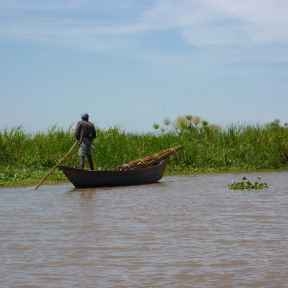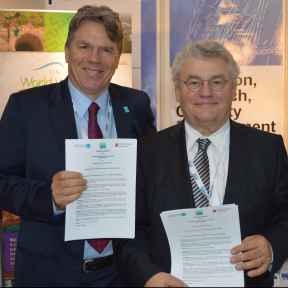Special issue of Wetlands Ecology and Management

A recently published Special issue of Wetlands Ecology and Management documents the trend of the diminishing papyrus wetlands in central and eastern Africa. The eight papers explore the complexity of papyrus wetland ecosystems and the multidisciplinary approach needed to support wetland governance and wise use.
Papyrus: once fertility and life, now diminishing

To the ancient Egyptians, the papyrus plant symbolised fertility and life. Such was its importance that it represented the kingdom of Lower Egypt itself. Its use was not only ceremonial, but a common feature of daily life, and famously used as parchment for early writing. With the passing of time, the celebration of papyrus diminished, along with the Egyptian papyrus wetlands themselves.
In more recent years the papyrus wetlands in central and eastern Africa have also diminished, often converted for agriculture. While this has increased supply of rice or other crops, it has been at the cost of other livelihoods, and the rich ecological heritage wetlands provide. Documenting this trend, and its consequences, is featured in a Special issue of Wetlands Ecology and Management (Volume 22 no. 2, published by Springer).
Milestone in Academic Output on Papyrus Wetlands

The Special issue is a milestone in the academic output on papyrus wetlands. Devoted entirely to African papyrus wetlands, still important for the livelihoods of millions of people, it is an output of the UNESCO-IHE led ‘Ecology of Livelihoods’ (ECOLIVE) project funded by the Netherlands Government and of a special session at the 9th INTECOL Conference in June 2012, organized by UNESCO-IHE and its partners.
The issue includes eight papers that explore the complexity of papyrus wetland ecosystems and the multidisciplinary approach needed to support wetland governance and wise use. An overview paper synthesizes past and present research and management in papyrus wetlands.
Other papers address the impacts of exploitation of papyrus wetlands on bird and vegetation diversity, and on the role of papyrus wetlands in carbon storage and nitrogen cycling. The hydrology of the Sudd wetland in South Sudan (one of the major papyrus systems in Africa), the use of papyrus biomass as a fuel, and novel approaches to decision making in papyrus wetlands are also highlighted.
Dr. Anne van Dam led the coordination of the Special issue. He was supported by two guest editors: Prof. Kenneth Irvine, Professor of Aquatic Ecosystems at UNESCO-IHE, and Prof. Dominic Mazvimavi of the Institute for Water Studies, University of the Western Cape, South Africa.



